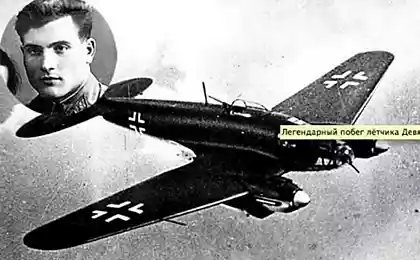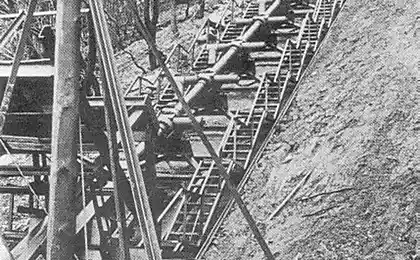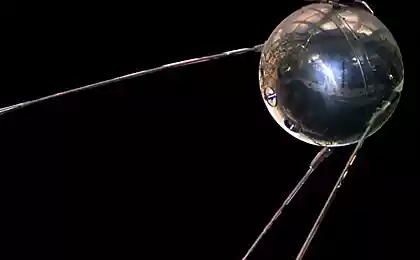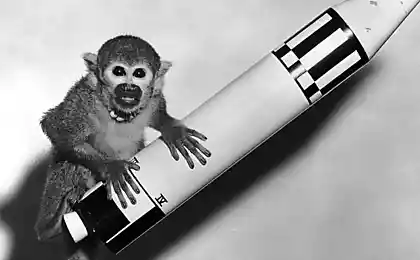613
70 years of the first photographs of Earth from space

The first photograph of Earth from space made on film October 24, 1946 with ballistic missiles "V-2"
24 Oct 1946, long before the Soviet "Sputnik 1" is officially opened for mankind, the space age, in the desert of new Mexico gathered a small search team of American scientists and soldiers. They set the goal to find a place of falling of rockets "FAU-2" and a cassette of 35mm film.
People were prepared for the first time to see something incredible: how Earth looks from space.
That day ballistic missile "V-2" was launched from the launch pad missile range white Sands (White Sands Missile Range) in new Mexico, USA. Unlike the previous launches of rockets by Wernher von Braun, "V-2" is launched vertically.
Charged 35-mm film camera was doing one frame every 1.5 seconds. The rocket climbed to an altitude of about 105 kilometers, and then fell down, crashing into the ground at a speed of 150 meters per second. The camera was completely smashed, but the film steel tape remained intact.
19-year-old soldier of the US army Fred Rulli (Rulli Fred) was one of the group members, which was sent in search of 24 October 1946. Military members of the expedition, the discovery was not made much of an impression. But scientists have created something incredible. When they found the steel box intact, seized with utter delight: "They were jumping like children," recalls Rulli. Utter madness began, when the film was delivered to the launch site, showed for the first time, the pictures showed on the screen: "Scientists just went nuts," stated a private.
Until a record photograph of the earth surface, taken with the high altitude, left the American military with a helium balloon Explorer II, took to the air on 22 066 m in 1935. High enough to capture the curvature of the globe (for the first time in the history of photography curvature the Earth filmed on 31 August 1933 the balloonist Alexander Dahl).
The camera on the missile "V-2" broke the record by more than five times. People saw our bright planet appears in the background of the darkness of space.
"Pictures first showed how our Earth looks like to aliens who arrive on a space ship," said Clyde Holliday (Clyde Holliday), engineer-designer of rocket cameras, reviews for National Geographic. In this magazine published an article about unique photography in the 1950's, when film footage glued together.
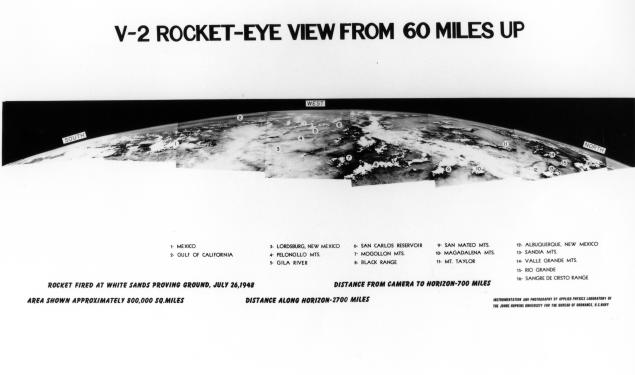
The result of the installation shots taken during the launch of "V-2" 24 Oct 1946
It was an incredible event.

Engineer Werner von Braun (with a handkerchief in his jacket pocket)
Starting October 24, 1946, was one of the many experiments of the research program "V-2" by a group of engineers under the leadership of Wernher von Braun who after the war moved to work in the United States under operation Paperclip. For them the joint Agency for the purpose of intelligence (Joint Intelligence Objectives Agency JIOA), the United States has created a fictitious biography and removed the mention of membership in the Nazi party and on relations with the Nazi regime from public records. The General public learned about this secret operation by chance in December 1946, when the chief design engineer Walther Riedel was the hero of the published article "German scientist says American food is tasteless, and the chicken is rubbery".
From 1946 to 1950, thanks to the launch of "V-2" the Americans have made over 1000 images of the Earth from a height of 160 km.
Video of the launch of "V-2" November 21, 1946
The famous German engineer Wernher von Braun began work on the rocket with liquid fuel in the 1930s. A key influence on him, the Professor Hermann Oberth, who is known as one of the six founders of modern rocketry and cosmonautics, along with Konstantin Tsiolkovsky, Yuri Kondratyuk (and the beginning of the twentieth century Kondratyuk calculated optimal trajectory to the moon, which NASA later used in the lunar program "Apollo"), Friedrich Zander, Robert eno-Peltry and Robert Goddard.

Werner von Braun later recalled his mentor: "Hermann Oberth was the first, thinking about the possibility of creating space ships, picked up a slide-rule and presented mathematically informed ideas and designs... I Personally see it as not only the guiding star of my life, but also owe him their first contact with the theoretical and practical issues of rocketry and space flight".
After the launch of the first satellite photography of the Earth was one of the main tasks of the state, and then the private programs. The earth was removed from the satellites, and other spacecraft. For example, launched on 12 September 1966 American manned spacecraft "Gemini-11" took a picture with a height of 1368 km.

The photograph with "Gemini-11"
Three years later, in July 1969, the crew of "Apollo 11" made famous photograph of the Earth above the horizon of the moon. The picture was taken from lunar orbit from a distance of about 400,000 km from Earth.

The picture with "Apollo 11"
In that picture the Ground looks too large due to the large focal length and cropping the image. The true size of the Earth when viewed from the moon is better understood for photography, which took the crew of "Apollo 15" on 26 July 1971.

The photo "Apollo-15"
With each decade our spacecraft farther removed in space, exploring the vastness of the Solar system. November 3, 1973, NASA launched the automatic interplanetary station "Mariner-10" was the first successful launch in the series "Mariner". It was the first that visited mercury on 29 March 1974. On the way to mercury camera took a photo of Earth and moon from a distance of 2.57 million km, first photographed them together.
Perhaps, the most remarkable photograph of the Earth made the probe "Voyager-1" June 6, 1990, ten years after the start of the trip.

The picture of the Earth with the "Voyager-1" (the distance of 6.05 million km)
This picture went down in history as a Pale Blue Dot.
Source: geektimes.ru/post/281848/


